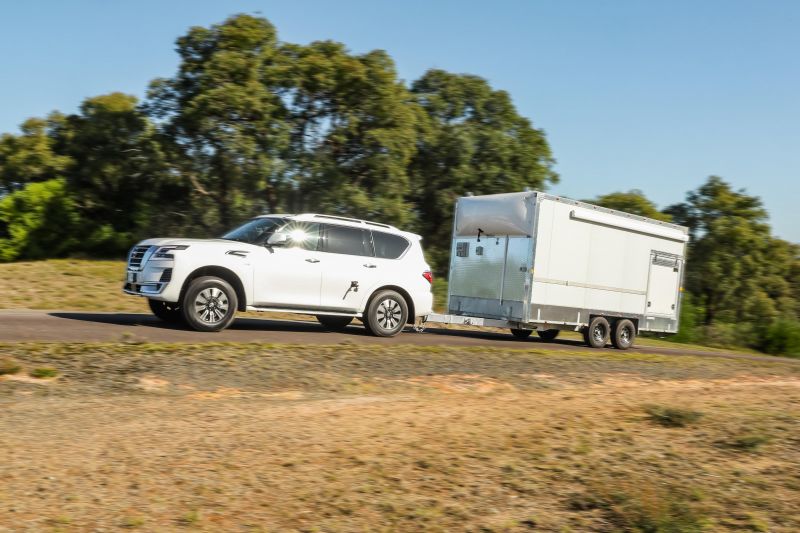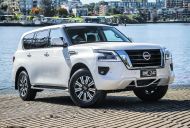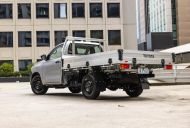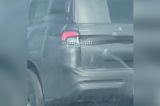There is no Australia-wide rule when it comes to towing when you are a learner driver licence holder.
- The rules vary depending on where you hold your licence
- Towing is potentially dangerous, and inexperienced drivers may lack the skill to stop accidents
- Always make sure you know the rules of what you can and can’t tow
However, towing a trailer, caravan, camper trailer, horse float, wood chipper, porta-loo or anything else is an act that shouldn’t be taken lightly.
Towing can end in tragedy if attempted by someone who doesn’t know what they’re doing. Just search “towing fail” on YouTube and you’ll see some confronting footage of drivers who seemingly have all the gear and no idea when it comes to towing.
There are two arguments as to when you should start learning about driving while towing something.
The first is that you should learn when you’re learning to drive in the first place. The logic being that if you learn that sort of skill straight away, it could come in hand if you need that talent at a later date.
The other way of looking at it is that L platers should be learning how to drive and understand the road first, before they’re expected to be able to cope with the additional burden of towing something in a ‘live’ situation.
That’s basically how some of the different jurisdictions across the country see it, too – the rules vary, depending on where your L plates are issued. Here’s a rundown of the different rules for Australian L plate drivers when it comes to towing.
The jurisdictions where L platers ARE NOT ALLOWED to tow:
New South Wales
According to the state government’s transport agency, learner and provisional P1 drivers have towing restrictions. “Learner drivers and learner and provisional motorcycle riders are not allowed to tow.”
It is also worth considering if you live near any of the borders with neighbouring states or territories that do allow L-plater towing, the NSW Centre for Road Safety states: “NSW learner, P1 and P2 drivers and riders must obey the same licence conditions and restrictions hat apply to them in NSW when they drive or ride in other states or territories in Australia.”
Victoria: According to the Vicroads site around learner driver restrictions, those drivers who are on their L plates must “not tow a trailer, caravan or another vehicle”.
Tasmania: The island state does not allow L platers to tow. The state’s PlatesPlus website states that learner-stage drivers must “never tow another vehicle, including trailer”.
The jurisdictions where L platers ARE ALLOWED to tow:
Queensland: L plate drivers are allowed to tow provided they “have the L Plate on the back of the caravan or visible on the trailer as well”.
However, Queensland Police state that towing is not a task that should be taken lightly – and, ideally, shouldn’t happen for the first time on a public road with other traffic around: “Towing a trailer or caravan requires extra concentration and skill. You should gain experience before trying to tow at high speed or in confined spaces.”
ACT: The ACT Road Rules Handbook states: “Towing is restricted to small trailers not exceeding 750 kilograms GVM (gross vehicle mass). Holders of a learner driver licence for a motorcycle are NOT permitted to tow.”
South Australia: MyLicence SA states: “If your permit or licence was issued in South Australia, you may drive a vehicle of no more than 4.5 tonne and tow a trailer, caravan, boat or horse float as SA does not restrict learner’s permit or provisional licence drivers from towing such vehicles. In most cases your permit/licence conditions travel with you if you drive interstate, however, be aware that some rules may be different.”
Western Australia: Learner drivers are permitted to tow in Western Australia. “L drivers are not restricted from towing a trailer as long as the learner driver is driving within the conditions of their learning permit – and this includes having a supervising driver alongside them in the vehicle”.
Northern Territory: The NT’s learner drivers’ guide states: “Towing – You are allowed to tow trailers”. Further, the Territory states that “L plates must be clearly displayed on the front and back of the vehicle. If towing a trailer, an L plate must also be displayed on the back of the trailer.”
Not intended as legal advice. Check with the relevant roads authority in your state or territory.












